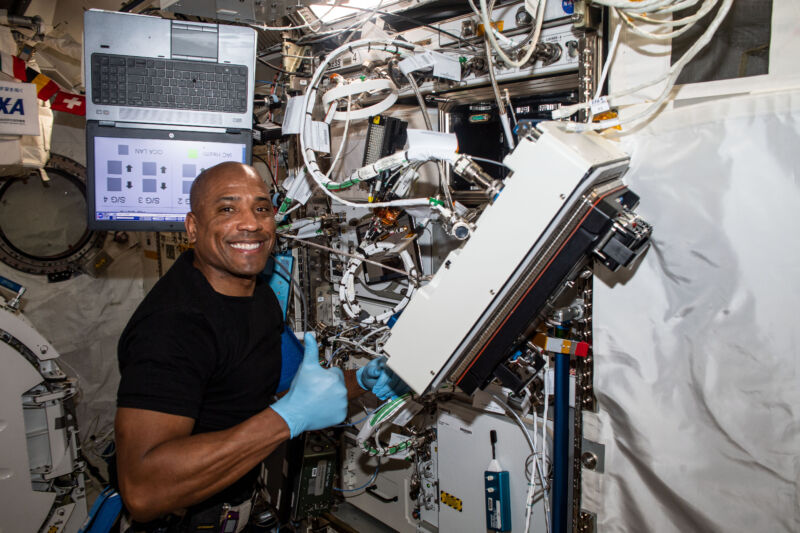Testing antibacterial surfaces on the International Space Station

Enlarge / Because particles that astronauts breathe out can drift for a while before settling, most surfaces in the International Space Station eventually get microbial contamination. (credit: NASA)
On June 5, a SpaceX Falcon 9 rocket blasted off to the International Space Station with new supplies, including equipment for scientific research. Among the new scientific gear that has arrived at the ISS are four tablets covered with extremely thin films that could play a crucial role in the development of materials for future human space flights.
Testing these innovative films, which were developed by the French commission for atomic and renewable energy (CEA), is part of an ongoing project aimed at developing antibacterial materials for space habitats.
MATISS (Microbial Aerosol Tethering on Innovative Surfaces in the International Space Station) consists of exposing these tablets in the ISS environments for a long time in order to collect the bacteria that gets deposited on them. These tablets are then returned to our laboratories for measuring the level of biocontamination," says project manager Sebastien Rouquette of the French space agency CNES.